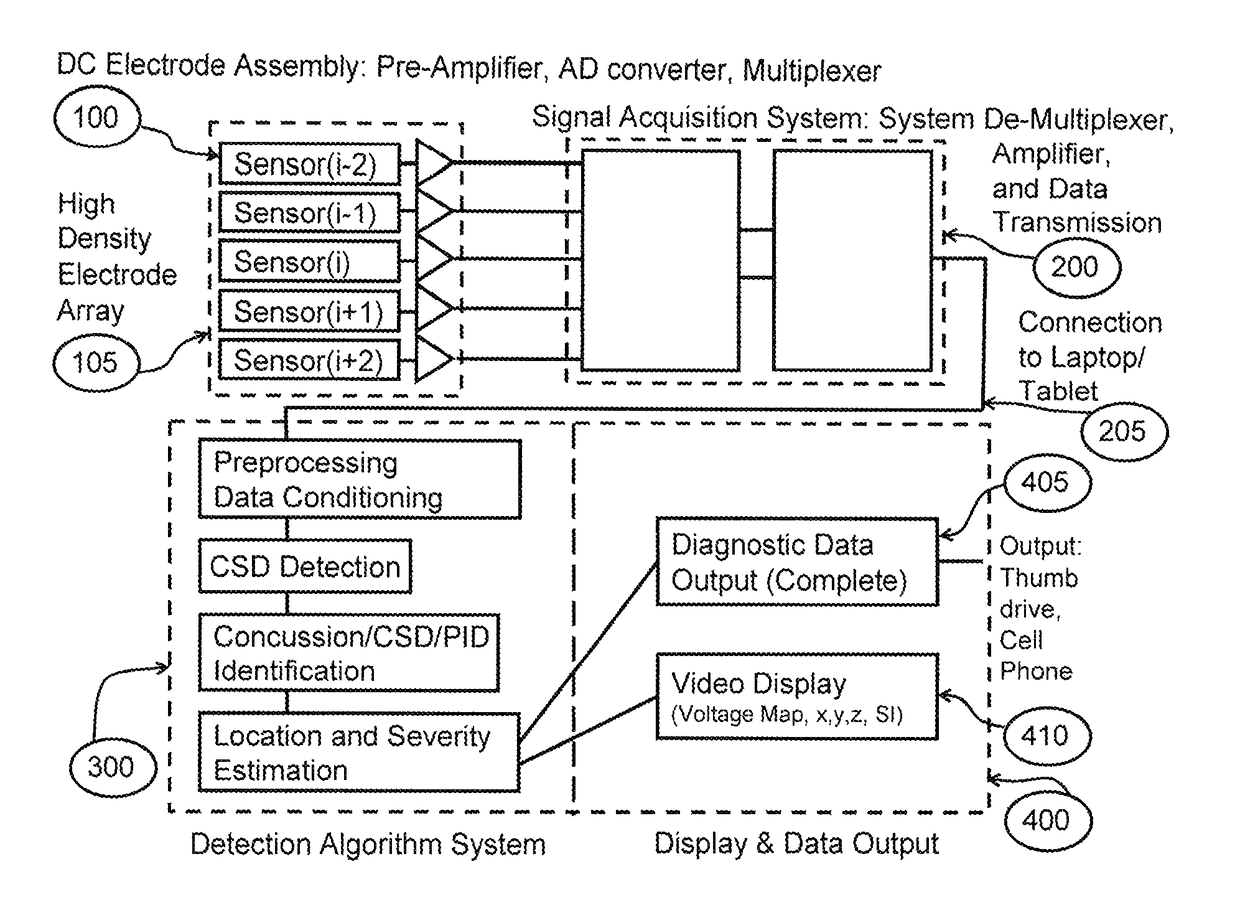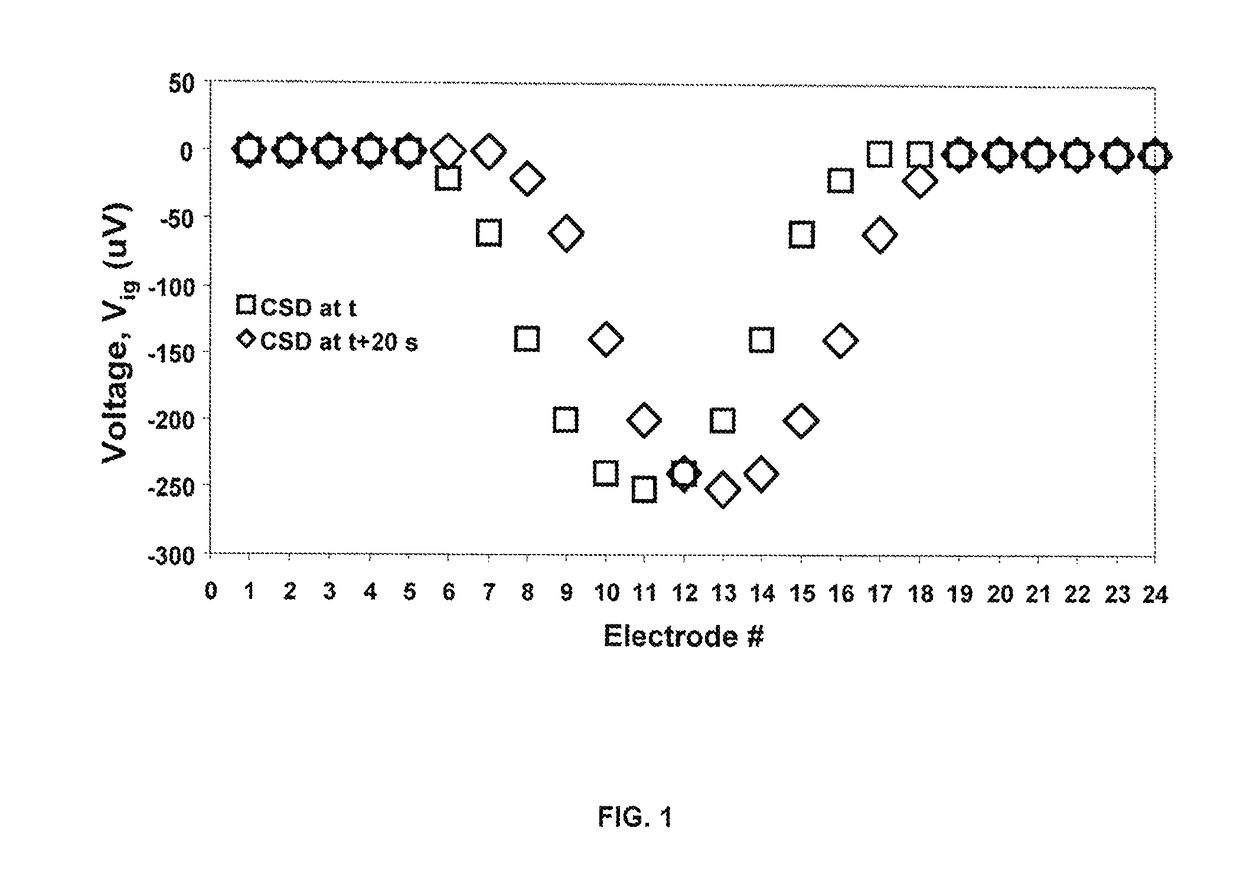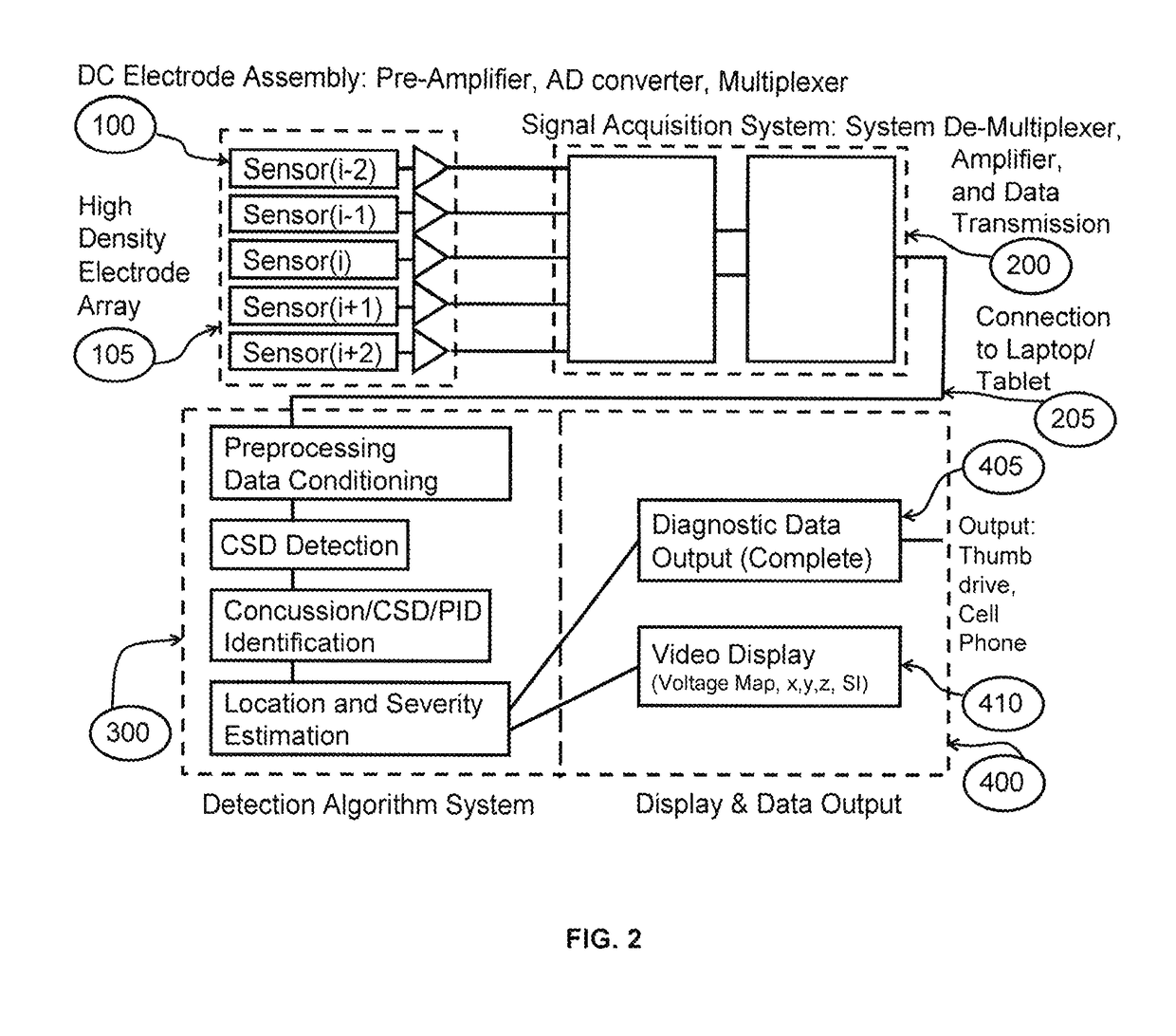Non-invasive systems and methods to detect cortical spreading depression for the detection and assessment of brain injury and concussion
a cortical spreading depression and cortical surface technology, applied in the field of brain injury detection and diagnosis, can solve the problems of high cost of mtbi, concussion, indirect cost, low detection efficiency, etc., and achieve the effect of increasing brain damag
- Summary
- Abstract
- Description
- Claims
- Application Information
AI Technical Summary
Benefits of technology
Problems solved by technology
Method used
Image
Examples
example 1
ted Electrode Helmet Transmitting Data to a Sideline Laptop for Analysis
[0098]In this example, a football player wearing a helmet instrumented with an electrode array cap that includes a High Density Electrode Array that transmits DC-coupled-EEG data to the sidelines is hit by another player on the right upper temporal aspect of the player's head. The player falls to the ground and is unable to get up. Data transmitted from the helmet cap to the sideline analysis system composed of the portable processing unit with visual display then is assessed. The system begins the analysis and identification procedure, while at the same time a doctor logs the standard concussion assessment questions and patient history into system. The system continues its performance for about thirty minutes, at which time the system provides information that the player has suffered a concussion by displaying a region of depressed voltage of about 200 μV on a diagrammatic representation of the player's head in...
example 2
Cap at the Sidelines Associated with a Laptop for Analysis
[0099]In this example, a football player is hit by another player on the right upper temporal aspect of the player's head. The player falls to the ground and is unable to get up. The player is assisted off the field and placed on the sidelines. A portable headband / electrode net and processing unit with visual display is fastened onto the player's head and a button is clicked to start the software for the analysis and identification procedure of the condition of the player. At the same time, a doctor logs the standard concussion assessment questions and patient history into system. The system continues its performance for about thirty minutes, at which time the system provides information that the player has suffered a concussion by displaying a region of depressed voltage of about 200 μV on a diagrammatic representation of the player's head in the form of an expanding ring with a width of about 3.0 mm that originates at the r...
example 3
Cap in a Neuro-Intensive Care Unit for Traumatic Brain Injury, Acute Ischemic Stroke, Intracerebral Hemorrhage, and Subarachnoid Hemorrhage Associated with a Laptop for Analysis
[0100]In this example, a patient in the neuro-intensive care unit is monitored with an electrode head unit which includes a High Density Electrode Array for the presence of CSDs and PIDs using DC-coupled-EEG data and the processing scheme as described above in Examples 1 and 2. A health care practitioner places the electrode head unit on the patient's head over the border between normal undamaged brain and the suspected region of brain damage as deduced from imaging or a neurological exam. The electrode unit is connected to the processing and display unit via wireless or wired connections. Over a period of up to seven days, the system collects data consisting of globular regions of about 3.0 mm diameter of depressed voltage of about 200 μV which travel along the border of the suspected region of damaged brain...
PUM
 Login to View More
Login to View More Abstract
Description
Claims
Application Information
 Login to View More
Login to View More - R&D
- Intellectual Property
- Life Sciences
- Materials
- Tech Scout
- Unparalleled Data Quality
- Higher Quality Content
- 60% Fewer Hallucinations
Browse by: Latest US Patents, China's latest patents, Technical Efficacy Thesaurus, Application Domain, Technology Topic, Popular Technical Reports.
© 2025 PatSnap. All rights reserved.Legal|Privacy policy|Modern Slavery Act Transparency Statement|Sitemap|About US| Contact US: help@patsnap.com



